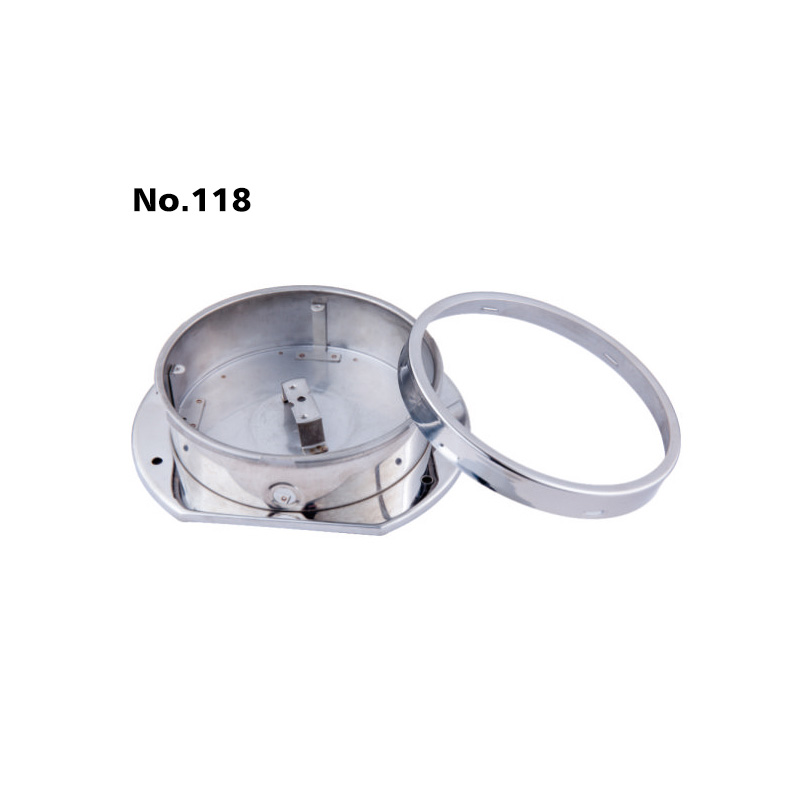
The pressure gauge is composed of a connector, a spring […]
The pressure gauge is composed of a connector, a spring tube, and several main components of the movement.
The welding of the pressure gauge mainly includes lead-zinc welding, silver welding, argon arc welding, special welding, etc. The normal operation of the clarinet of the instrument is 100,000 times. Its working principle is that through the deformation of the spring tube, the movement (the sector gear and the central gear work) drives the pointer to display the pressure of the measured medium on the scale of the panel.
Three common problems in the use of pressure gauges:
1. The fan gear of the pressure gauge will wear out after working for a period of time;
2. The pressure measuring system of the pressure gauge is impacted by the instantaneous overpressure of the measured medium, so that the pointer does not return to the zero position or rushes under the limit nail;
3. The indicator pointer does not return to zero after the system is depressurized.
Three methods to solve common problems of pressure gauges:
1. Increase the width of the contact surface of the sector gear and increase the contact surface (that is, increase the gear module) to achieve the purpose of anti-wear and increase service life;
2. Install a limit block on the movement of the instrument. When the pressure measurement system is subjected to an instantaneous impact, the cylindrical gear and sector gear of the movement are not easy to trip, and solve the problem that the pointer does not return to zero or the pointer does not return to zero after the pressure gauge is subjected to the impact pressure. The problem of being washed behind the limit nail;
3. The impact pressure measuring system closes the valve under the pressure gaugePunching metal parts Suppliers in China.
Anti-corrosion measures
Anti-corrosion of shell:
1. There is corrosive gas in the operating environment, it is recommended that the outer shell be made of stainless steel or sprayed with PTFE to extend the service life of the pressure gauge;
2. The use environment has high humidity. It is recommended that the enclosure increase the protection level to prevent external water vapor from entering the gauge and increase the service life of the pressure gauge.

Anticorrosion of wetted parts:
1. For general corrosive media, if the stainless steel elastic element can withstand corrosion for 1 to 2 years, you can choose a general stainless steel pressure gauge. When installing, the pressure guiding tube should be short. If necessary, the buffer coil should be replaced with a buffer tank to prevent impurities Blocked.
2. If the medium is intended to corrode stainless steel and copper, the buffer tank can be changed to an isolation tank, and corrosion-resistant isolation liquid can be added. The type of barrier liquid can be selected according to the nature of the tested medium, but it is better to not deteriorate after using for more than half a year. If ordinary isolation fluids are not applicable, fluorochloro oil can be used as the isolation fluid, but the price is very expensive, so the isolation tank should be made small, and the fluorine oil should be recycled for reuse during disassembly and assembly.
3. Diaphragm pressure gauges can be used. At present, there are molybdenum-containing stainless steel, Hastelloy and tantalum sheets. The pressure is transmitted between the diaphragm and the ballistic tube with methyl silicone oil. The minimum range can be 0-100kPa. If the diaphragm material is still If it is not resistant to corrosion, a layer of F46 (polyfluoroethylene propylene) diaphragm can be added, but the sensitivity of the meter is reduced. F46 can also be used as the isolation diaphragm directly, but pay attention to the permeability of the medium. For high temperature and oil-free medium transfer fluid, fluorine oil can be used.
tel: +86 - 571 - 85224000
fax: +86 - 571 - 88730677
E-mail: [email protected]
add: NO.8,4th road Changkou dist,
Fuyang,hangzhou

Copyright © 2016 by themeWar. All Rights Reserved.




